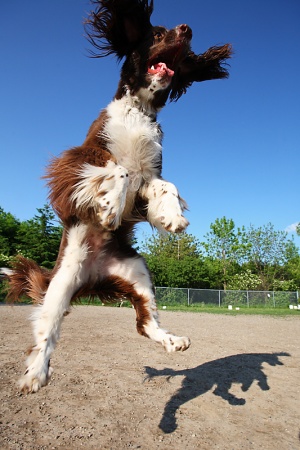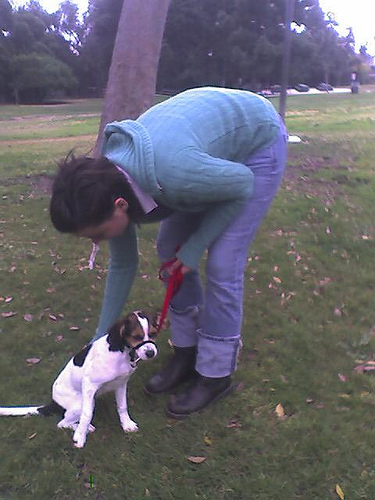Some dogs believe everyone they meet is a friend. Other dogs respond depending on how they are approached. Still others will warn a stranger to keep their distance.
Touch is a major part of a dog’s life with us. Most dogs enjoy belly rubs, massages, scratching at the base of the tail. Each dog has his/her favorite spot(s). Because we are so closely bonded with our dogs, they let us touch them where they may not allow strangers or anyone else to do so.
Researchers have shown that when our dogs greet us, besides extending a verbal greeting, touching them increases amounts of the hormone oxytocin in their systems which shows happiness.
Body language is also a strong indicator of what your dog is feeling. Lip licking, yawning, head lowering, frozen posture, turning away, are all signs that your dog is stressed. It’s important to pay attention to these signals when a stranger approaches to pet your dog.
One of my dogs, Murphy, does not like to be touched on her head. She lets me know by lowering her head when I forget and touch her there. She will tolerate the head-touching from me, but will show her discomfort at someone else’s attempt by moving away.
By the way, this is not an unusual response as many dogs don’t enjoy being touched on top of the head.
Restraining a dog to allow a stranger to pet him/her is not a good idea as it can force a negative response, even a show of aggression.
Tellington T-Touch developer Linda Tellington-Jones has shown, with her special type of massage that can be applied to most animals, can improve our relationship with them as well as eliminate unwanted behavior.
Early socialization is an important aspect of a dog’s training. But be aware of any discomfort your dog shows when a stranger attempts to pet him/her. As for strangers, they should always ask your permission before touching your dog. And let them know where and how your dog likes to be petted.



